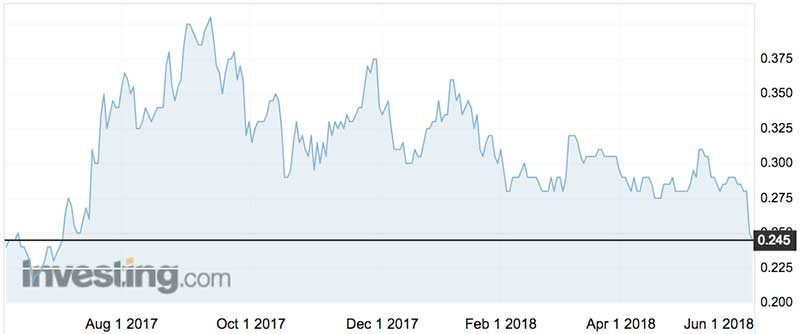You might be interested in
Mining
Monsters of Rock: Second big bank upgrades gold forecasts. Can miners catch up?
News
Hot Money Monday: 'Cut losses and let winners run' - advice from legendary momentum trader Paul Tudor Jones
News
Mining
It’s got an operating gold mine and money in the bank — but that isn’t enough for Alkane Resources which is in a renewed push to get a rare earths project off the ground in central NSW.
The miner has finalised a detailed financial review into the project in Dubbo, NSW, which has reinforced its positive economics.
But without a cornerstone investor which is willing also to take a chunk of output from the mine, Alkane (ASX:ALK) is reluctant to commit to the $1 billion venture.
Along with buoyant prices — which has also helped revive the fortunes of the long troubled Lynas Corp project — Alkane is hopeful that the recovery of the price of zirconium will get the Dubbo project across the line, since this material alone would make up as much as 40 per cent of the output.
Underlining the improving outlook for mineral sands prices is takeover activity such as the low-ball $300 million bid by Eramet to snare control of Mineral Deposits, another zircon producer.
That followed the earlier bid — unsuccessful — by Iluka Resources for Kenmare Resources, the owner of a mine in Mozambique, which it followed up with the successful $375 million purchase of Sierra Rutile.
“Potential zirconium customers are talking to us,” Alkane’s managing director Nic Earner told Stockhead, given the 40 per cent rise in the price of zircon in 2017 alone, while the price of zirconium oxychloride, a key downstream zirconium product, is up around 80 per cent over the past year.

“We’re entering a pricing environment where [zirconium] is becoming attractive again. If we continue to see these pricing trends, then the project does become price competitive.”
Also giving prices a lift is the cub on illegal rare earths mining in China which has resulted in no fresh production coming to the market at a time when demand continues to rise.
Government approvals have been in place for the start of the Dubbo project for some time, but the difficulty has been in securing financing and offtake agreements.
As was the case with Orocobre’s lithium project and Lynas Corp’s rare earths project, a cornerstone investor is essential. Both of these projects have Japanese trading houses as large investors, for example.
“Absolutely,” Alkane’s Earner said of the need for a cornerstone investor. “An industry player would give comfort to other investors.”
“It is a sector littered with both profits and losses for investors, but demand is slowly rising. We have a fully paid up [production] option here, but we need the right customer, and in the meantime we have our gold business.”
By year’ end, Alkane will have around $100 million in cash on its balance sheet which would fund a large chunk of its share of the cost of developing the Dubbo project.
It is also looking at spending around $16 million to take its Tomingley gold mine underground, which would extend its life.
With cash in hand, this gives Alkane a clear leg up when looking at others seeking to launch rare earths projects, such as Hastings Technology Metals which just last week pulled a planned capital raising for its Yangibana project in Western Australia due to uncertain financial markets.